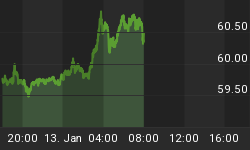Central bankers everywhere are Looking for Tools in a Zero Interest-Rate World.
The Swiss National Bank is becoming the first central bank in Europe to learn what it's like to live in a zero interest-rate world.
"They simply don't have much room left on interest rates" following a 100 basis-point cut Nov. 20, said Reto Huenerwadel, senior economist at UBS AG in Zurich. "Still, they're actively using monetary policy and are looking for creative solutions," which may include buying bonds, intervening in currency markets and expanding swaps with other central banks, he said.
With Switzerland following the rest of Europe into recession, the central bank has cut the short-term rate it uses to steer borrowing costs in the broader economy to 0.1 percent. As rates approach zero, SNB President Jean-Pierre Roth, like his counterparts at the U.S. Federal Reserve, may instead have to find new tools to restore the flow of credit through the economy and head off the risk of deflation.
The SNB's challenge may soon be shared by other central banks in Europe. Bank of England Governor Mervyn King openly discussed the possibility of zero interest rates for the first time on Nov. 25. The European Central Bank will cut its benchmark rate to 1.5 percent next year, according to the median of 25 forecasts in a Bloomberg News survey, with Citigroup Inc. saying that a move to zero is possible.
The Fed has already started to use more unorthodox methods. The U.S. central bank said Nov. 25 it will purchase as much as $600 billion in debt issued or backed by government-chartered housing-finance companies.
Australia Cuts 1 Full Point
Bl.oomberg is reporting Australia Extends Biggest Rate-Cut Round Since 1991
Australia's central bank cut its benchmark interest rate by one percentage point, extending the biggest round of reductions since the nation was last in a recession in 1991.
Governor Glenn Stevens lowered the overnight cash rate target to a six-year low of 4.25 percent in Melbourne today, the fourth reduction in as many months. Four of 21 economists surveyed by Bloomberg News forecast today's move and 15 tipped a three-quarter point cut.
Stevens said monetary policy is now "expansionary" to help restore consumer and business confidence, which has been battered by this year's 44 percent slump in the benchmark stock index and the biggest drop in house prices since 1978. Three percentage points of cuts since September save borrowers with an average A$250,000 ($159,000) home loan more than A$500 a month.
Today's decision "is a vital element in the effort to ward off recession in Australia," said Heather Ridout, chief executive of the Australian Industry Group, which represents the nation's biggest companies.
Bernanke Aims To Lower Long Term Rates
In Helicopter Ben Pulls Out Bazooka I noted that Bernanke is taking a play out of his 2002 handbook and firing a bazooka at the long bond. Indeed yields are collapsing as shown in the following chart.
Historical Yield Curve

Is Quantitative Easing Bernanke-San's Next Play?
Japan Quantitative Easing comparisons are now being made as ‘Bernanke-san' Signals Policy Shift.
Federal Reserve Chairman Ben S. Bernanke signaled he's ready to dig deeper into the central bank's toolkit after cutting interest rates almost as much as he can, opening the door to a shift by policy makers this month.
Bernanke yesterday said he may use less conventional policies, such as buying Treasury securities, to revive the economy, because his room to lower the main U.S. rate from the current 1 percent level is "obviously limited." Even so, reducing the rate is "certainly feasible," he said.
Policy makers may decide at their next meeting Dec. 15-16 on the details of carrying out such a shift, which might resemble the "quantitative easing" strategy the Bank of Japan pursued in 2001-2006 after driving interest rates close to zero. The Fed chief's readiness to rely more on adding reserves to the banking system prompted JPMorgan Chase & Co. economist Michael Feroli to refer to him as "Bernanke-san" in a note yesterday.
"This sets the stage for the Federal Reserve to be more formal in its adoption of quantitative easing," said Vincent Reinhart, the Fed's director of monetary affairs until last year and now a scholar at the American Enterprise Institute in Washington.
The Bank of Japan is the only major central bank in modern times to rely on quantitative easing -- the strategy of injecting more reserves into the banking system than needed to keep the target interest rate at zero.
Steps Bernanke has taken so far have prompted some Fed officials and economists to say the central bank is already pursuing such a policy. With an array of emergency-loan programs aimed at easing the worst credit crisis in seven decades, Bernanke has expanded the Fed's balance sheet to $2.11 trillion as of last week, more than double the year-earlier level.
Feroli, a former Fed economist, headlined his research note yesterday: "Bernanke-san goes further down the path of Quantitative Easing."
Bank of Japan Governor Masaaki Shirakawa said in May that while the strategy "was very effective in stabilizing financial markets," it had "limited impact" in remedying Japan's economic stagnation because banks wouldn't lend and companies wouldn't borrow.
Banks Won't Lend And Companies Won't Borrow
Gee, That sounds familiar. Where have I heard that before?
Here it is, on on January 24, 2008 in Banks Attempt To Freeze Balance Sheets
There is systemic capital impairment and increased risk aversion everywhere you look, on the part of consumers and banks alike. This is where the hyperinflation theory falls flat.
Those wishing to review both sides of the debate however, may wish to read Not Your Father's Deflation: Rebuttal and Peter Schiff Replies to Deflation Rebuttal.
In the final analysis, deflation is all about risk taking and psychology (the ability and willingness of consumers to borrow and the ability and willingness of banks to lend). Right now Bernanke specifically, and central bankers in general, more than have their hands full in this regard.
















